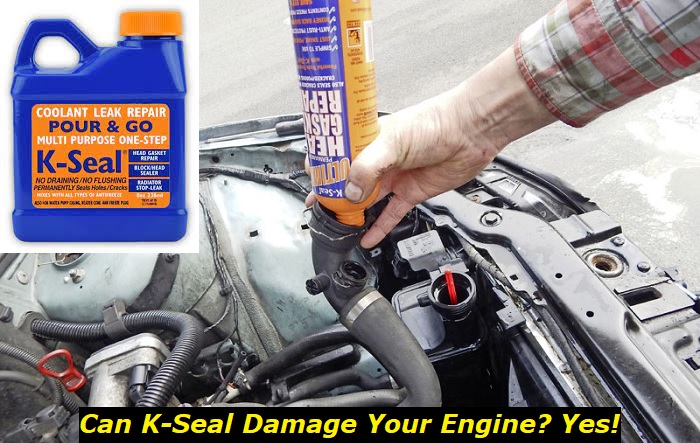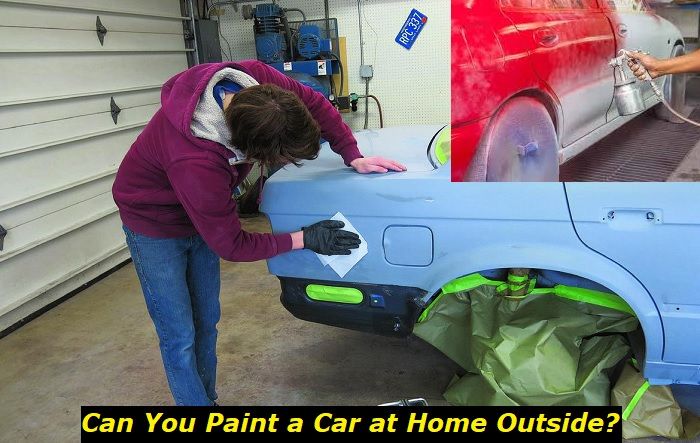You are about to enter the car headed for work and notice a puddle of coolant under the car. You pop up the hood to check what could be the problem and discover, it is the radiator. The cost of repairing the radiator or replacing one is high, especially in these tough economic times. Then you remember you saw a K-Seal ad in a magazine.
Additives for leaks highlights
- Efficiency:close to zero
- Availability:agood deal of brands
- Average price: $35
- Way to use:pour into the coolant tank
- DIY use:yes
- Experts' advice:only biased advice
- Independent testing:onlynegative
- Consequences:contaminated coolant, contaminated cooling system, no effect whatsoever

What is K-Seal?
K-Seal is a popular coolant sealant manufactured in the USA. According to the manufacturer of K-Seal International Ltd, the sealant permanently repairs leaks in the radiator, head gasket, head cylinder, heater matrix, and water pump casing.
The K-Seal sealant is marketed for use on all water-cooled engines. For this reason, it has become trendy for use on cars, motorbikes, and heavy machinery engines. It has been manufactured with ASTM D3147 standard. According to the manufacturer, a test conducted at Brighton University proved the sealant permanently seals cracks as big as 0.254mm and 12.7mm long. It will seal holes with a diameter of up to 0.635mm. But since the targeted holes and cracks are much smaller than this, K-Seal is supposed to seal them easily.
How does K-Seal work?
K-Seal is in liquid form and manufactured to be added to the car's coolant. The sealant contains ceramic microfibers and copper particles. When added to the car's coolant, the sealant will flow suspended until it encounters some air, usually a leak, and solidifies. After coagulating around the leaking hole or crack, the sealant stays there permanently. K-seal can be added to a hot or cold engine, which is why it is so popular among roadside recovery service providers, DIYers, and professional mechanics.
K-Seal is designed to work seamlessly with all manner of antifreeze. This means you don't have to haggle for one for your specific vehicle. The sealant is also compatible with aluminum radiators and other metals, making it easy to use on all vehicles.
The manufacturer advises putting one bottle of K-Seal, normally 236ml, in a 20-liter of coolant. This will apply to cars, small commercial vehicles, and motorcycles. Use 472ml of K-Seal for every 20 liters of coolant for heavy commercial vehicles.
If the coolant is old or with impurities, K-Seal recommends that you flush the coolant system first. Do this, too, if you suspect an obstruction in the system. To have the desired effect, you should add the sealant to the cooling system and confirm that it flows freely.
K-Seal advises starting the engine and letting it idle until it reaches normal operating temperature. You can also take a gentle drive to let the sealant find the cracks and holes. Once you are satisfied the leakage has been solved, you can flush the system or let it remain.
What are the risks associated with K-Seal use?
K-Seal is a popular product, but like every other product, it has its flaws. A majority of the K-Seal flaws and issues are reported by its users. Here are the reasons why you should be cautious when it comes to using K-Seal;
- Big cracks and holes not sealed
You can't hold this against K-Seal. However, most people who end up pouring K-Seal into the coolant reservoir do so after discovering a leak, not after disassembling the engine and identifying the crack. This is probably the reason why many car owners who have used K-Seal come back to report the leakage has started again.
- It is not a permanent solution
Many drivers and mechanics consider K-Seal a wonder medicine. But as the experts will tell you, this sealant is only meant to help you in the short term. Depending on the severity of the damage, the K-Seal will sort you for up to 50,000 miles. The permanent solution to a cracked head gasket is replacing it. A messed up heater matrix will require expertise to reform it to its previous condition.
- Creates problems in unsealed engine cooling systems
Old unsealed engine cooling systems can have a lot more problems than just coolant leakage when you add K-Seal. As stated earlier, this sealant reacts when it comes into contact with air, which is usually trapped in these engines. The sealant will clog and solidify in the narrow channels inside the engine. This clogging will start in the engine and then continue onto the radiator.
- Overheating of the engine
The heater matrix in the block has very narrow channels that can easily get blocked. If the sealant solidifies inside the matrix, there is a considerable risk of the coolant channels getting blocked. This is especially the case for old unsealed engines.
When this happens, the block will overheat in the area where water is unable to flow to, and this can cause damage to the chamber and other engine components. An engine overheating can lead to serious problems, including warping of the block, which can result in you replacing the entire engine.
What are the dangers of using K-Seal for a DIYer?
As a do-it-yourself enthusiast or learner, you should know one or two things about dealing with minor problems affecting your car. One of the go-to solutions is the K-Seal. This sealant seals cracks in an extraordinary way; every driver should have it in their car. However, the usage of K-Seal comes with its risks and dangers.
- Damage to the engine - Once you have used K-Seal to seal a leakage in your car, there is always the risk it might end up clogging in the wrong place. This might lead to engine overheating and blockage, among other issues. This issue has been reported by some Freelander owners who have used the sealant. The coolant formed gunk in the heater matrix, making the engine overheat.
- It can be very costly in the long run - Some drivers have reported being forced to reapply K-Seal because their vehicles started to leak again. This can be frustrating, considering that K-Seal is not the cheapest coolant sealant out there. Given that as a DIYer, you will attend to a leakage at home, you might end up seeking the services of an expert because the K-Seal is not solving the problem. The problem might be solved by replacing the head gasket or resurfacing the head cylinder, which would have been the solution in the first place.
- Some coolant leakage issues can't be solved using a sealant. Unless you have properly diagnosed the problem you are facing, you run the risk of applying K-Seal unnecessarily. As you may know, coolant leakage can be caused by a water pump hose loosening or corroding. A blown head gasket cannot be solved by simply adding K-Seal. The head gasket needs to be replaced, and most probably the o-rings too.
Is K-Seal a good alternative?
If you have been a driver long enough, you have learned a thing or two about car maintenance. The vehicle is complex because it is equipped with numerous systems, and it is almost impossible to master how all of them work leave alone how to diagnose them. Additives such as K-Seal are introduced to help drivers and mechanics solve some of the problems that your car might encounter. Some of these additives and aftermarket products have proven to be life savers, while others pose a risk to you and your car.
K-Seal is a product made by a renowned company that has prospered by selling its car solution products. Millions of drivers and mechanics have used this product, and by this alone, there is some legitimacy in the product. Professionals and product critics have alluded to the product as a lifesaver.
Some automobile experts differ on whether K-Seal should be marketed as a one-for-all solution to all coolant leakage issues. The product has its negative aspects, and every user should know them. But it is alright, besides the product creating gunk in the engine, blocking the heater matrix, and sometimes failing to address the real issue.
K-Seal is a good first-aid product to have, and it can help you get out of a risky or tricky situation. However, you will need to read the PCM to establish what codes have been recorded. An OBD II scanner should help you read the codes, ensuring you solve the problem professionally.
When you decide to use K-Seal, ensuring the damage you are attending to has not been caused in an accident is advisable. In most instances, the damage caused by an impact is bigger than it looks, and an expert should help you.
Conclusion
K-Seal is a popular product that has helped many drivers solve cooling system issues. However, the number of experts advising against blanket usage of K-Seal, especially by DIYers, grows by the day. It is a product that, even though great in every aspect, has its cons and can lead a car owner to neglect to address the real issue causing the leakage.
About the authors
The CarAraC research team is composed of seasoned auto mechanics and automotive industry professionals, including individuals with advanced degrees and certifications in their field. Our team members boast prestigious credentials, reflecting their extensive knowledge and skills. These qualifications include: IMI: Institute of the Motor Industry, ASE-Certified Master Automobile Technicians; Coventry University, Graduate of MA in Automotive Journalism; Politecnico di Torino, Italy, MS Automotive Engineering; Ss. Cyril and Methodius University in Skopje, Mechanical University in Skopje; TOC Automotive College; DHA Suffa University, Department of Mechanical Engineering






Add comment